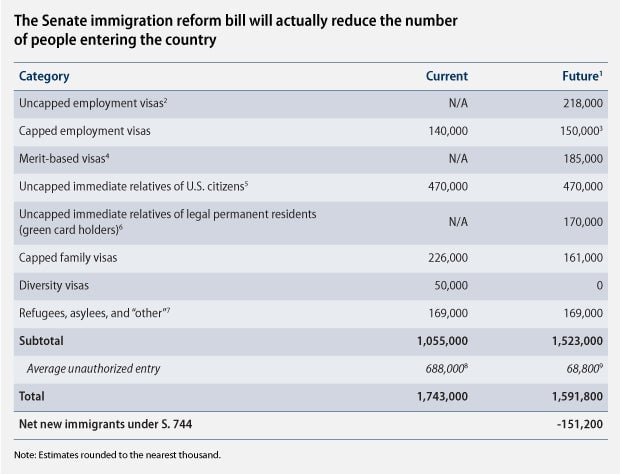US immigration reform would mean fewer immigrants, and a smaller economic boost
A progressive think tank ran the numbers on the compromise immigration bill the US Congress is considering, and found out that it would likely result in 150,000 fewer immigrants to the United States than the current rate. This table shows the results:

A progressive think tank ran the numbers on the compromise immigration bill the US Congress is considering, and found out that it would likely result in 150,000 fewer immigrants to the United States than the current rate. This table shows the results:

As you can see, the basic change is 600,000 fewer unauthorized immigrants, and about 500,000 more authorized immigrants. The net reduction is driven by new security at the border and new legal avenues of entry. “The bill is taking what’s been a chaotic system and having people come here without status, and putting it into an orderly, legal way,” says Phillip Wolgin, one of the Center for American Progress analysts behind the study.
That’s a finding that the authors hope will allay fears that the bill will create an enormous increase in the number of new permanent residents.
It’s worth noting that these forecasts are only of immigrants who receive residency, and doesn’t include the expanded number of temporary work visas for high- and low-skilled workers. The bill would allow several hundred thousand more workers each year under those categories. The functioning of agricultural guest worker programs in particular will be critical to forestalling unauthorized immigration.
The calculations also don’t include the nearly 11 million unauthorized immigrants already in the US, on the grounds that granting them legal residency won’t change the fact that they already live and work in the United States.
The net effect of switching more immigrants from illegal to legal status should have positive economic repercussions—legal immigrants tend to be more productive, earn higher wages and pay more taxes. But it’s not the kind of bonus you might see from allowing significantly more people into the US.